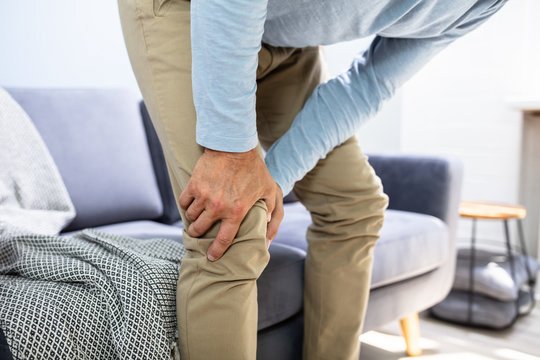Knee osteoarthritis, commonly known as knee degeneration, is a progressive condition that affects millions of people globally. It occurs when the protective cartilage in the knee joint wears down over time, leading to pain, stiffness, and decreased mobility. While osteoarthritis can be debilitating, there are several effective treatments that can help manage symptoms and improve quality of life. This article explores the causes, symptoms, and best treatment options for knee osteoarthritis.
What Is Knee Osteoarthritis?
Knee osteoarthritis is a degenerative joint disease that primarily affects the knee’s cartilage—the smooth tissue that cushions the ends of bones and allows for smooth movement. As the cartilage breaks down, the bones of the joint rub against each other, causing pain, swelling, and stiffness. Over time, this can lead to a loss of mobility and difficulty performing everyday tasks.
Causes of Knee Osteoarthritis
Several factors can contribute to the development of knee osteoarthritis:
- Age: The risk of osteoarthritis increases with age as cartilage naturally wears down over time.
- Obesity: Excess weight puts added pressure on the knee joints, accelerating cartilage wear and tear.
- Injury: Previous knee injuries, such as fractures or ligament tears, can increase the likelihood of developing osteoarthritis.
- Genetics: A family history of osteoarthritis can increase your risk of developing the condition.
- Overuse: Repetitive stress on the knee joints from physical activities or jobs that require heavy lifting or kneeling can lead to the breakdown of cartilage.
- Gender: Women are more likely than men to develop osteoarthritis, particularly after the age of 50.
Symptoms of Knee Osteoarthritis
Knee osteoarthritis symptoms usually develop gradually and worsen over time. Common symptoms include:
- Pain: Pain in the knee joint during or after movement is one of the most common symptoms of osteoarthritis.
- Stiffness: Stiffness, particularly in the morning or after periods of inactivity, is another hallmark of the condition.
- Swelling: The knee may become swollen due to inflammation or excess fluid buildup in the joint.
- Decreased range of motion: As the cartilage deteriorates, it becomes harder to move the knee freely.
- Grinding sensation: Some people with osteoarthritis experience a grinding or clicking sensation in the knee when they move.
Treatment Options for Knee Osteoarthritis
While there is no cure for knee osteoarthritis, a combination of lifestyle changes, medical treatments, and, in some cases, surgery can help manage the symptoms and slow the progression of the disease.
- Lifestyle Modifications
- Weight management: Losing weight can significantly reduce the stress on your knees, alleviating pain and improving mobility.
- Physical therapy: Strengthening the muscles around the knee through specific exercises can provide better joint support and reduce symptoms.
- Low-impact exercise: Activities such as swimming, cycling, and walking can help maintain joint mobility without putting excessive strain on the knees.
- Use of assistive devices: Knee braces or shoe inserts may help relieve pressure on the knee and improve stability.
- Medications Several medications are available to manage the pain and inflammation associated with knee osteoarthritis:
- Over-the-counter pain relievers: Nonsteroidal anti-inflammatory drugs (NSAIDs), such as ibuprofen and naproxen, can help reduce pain and swelling.
- Topical creams: Creams containing capsaicin or menthol can be applied to the knee to relieve pain.
- Corticosteroid injections: These injections can provide temporary relief from severe pain and inflammation.
- Hyaluronic acid injections: Hyaluronic acid can be injected into the knee to improve lubrication and reduce pain.
- Physical Therapy and Exercise Physical therapy is a cornerstone of knee osteoarthritis treatment. A physical therapist can help design an exercise program that strengthens the muscles around the knee, improves flexibility, and reduces pain. Regular exercise is essential for maintaining joint function and preventing further deterioration.
- Surgical Options When conservative treatments fail to provide relief, surgical options may be considered:
- Arthroscopy: In some cases, surgeons can use small instruments to clean out debris or repair damaged cartilage through a minimally invasive procedure called arthroscopy.
- Osteotomy: This procedure involves cutting and reshaping the bones around the knee to relieve pressure on the joint.
- Partial or total knee replacement: In severe cases, the damaged joint may need to be replaced with an artificial joint. Knee replacement surgery is highly effective in reducing pain and restoring function.
Preventing Knee Osteoarthritis
While you cannot completely prevent knee osteoarthritis, there are steps you can take to reduce your risk and slow its progression:
- Maintain a healthy weight: Keeping your weight within a healthy range reduces stress on your knees.
- Stay active: Engage in regular exercise to strengthen the muscles around your knee and improve joint flexibility.
- Avoid overuse: Take breaks during repetitive activities that put stress on the knee joints.
- Use proper body mechanics: Whether lifting, running, or walking, using correct techniques can help protect your joints.
Conclusion
Knee osteoarthritis is a progressive condition that can significantly impact your quality of life, but with proper management, it is possible to reduce pain and maintain mobility. From lifestyle changes and medications to surgical interventions, there are numerous treatment options available. If you are experiencing symptoms of knee osteoarthritis, consult a healthcare provider to determine the best treatment plan for you.
References
- Arthritis Foundation. “Osteoarthritis of the Knee.” Available at: https://www.arthritis.org/diseases/osteoarthritis
- Mayo Clinic. “Knee Osteoarthritis.” Available at: https://www.mayoclinic.org/diseases-conditions/osteoarthritis/symptoms-causes/syc-20351925
- National Institute of Arthritis and Musculoskeletal and Skin Diseases. “Osteoarthritis.” Available at: https://www.niams.nih.gov/health-topics/osteoarthritis
This article provides a comprehensive overview of knee osteoarthritis, focusing on its causes, symptoms, and treatment options. By following the advice provided, individuals can effectively manage the condition and improve their quality of life.




